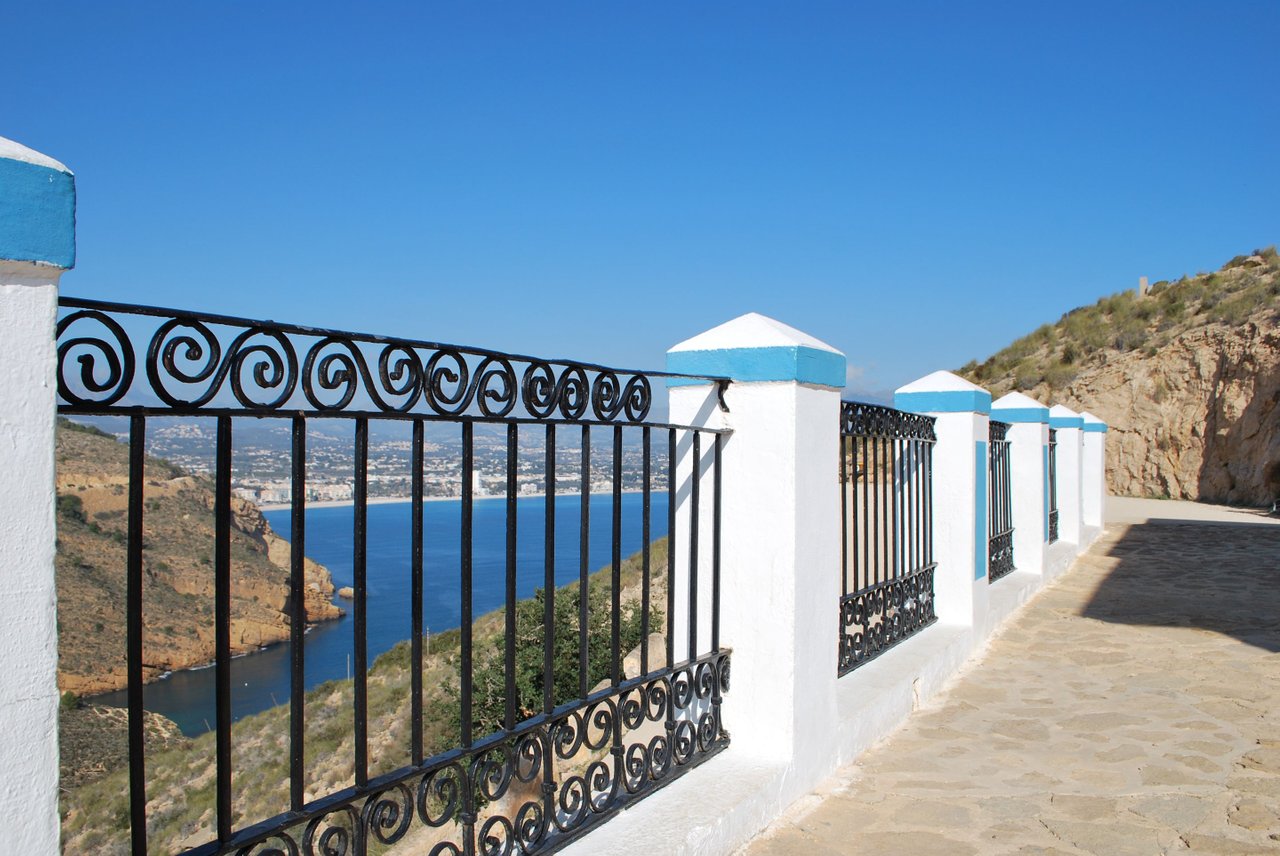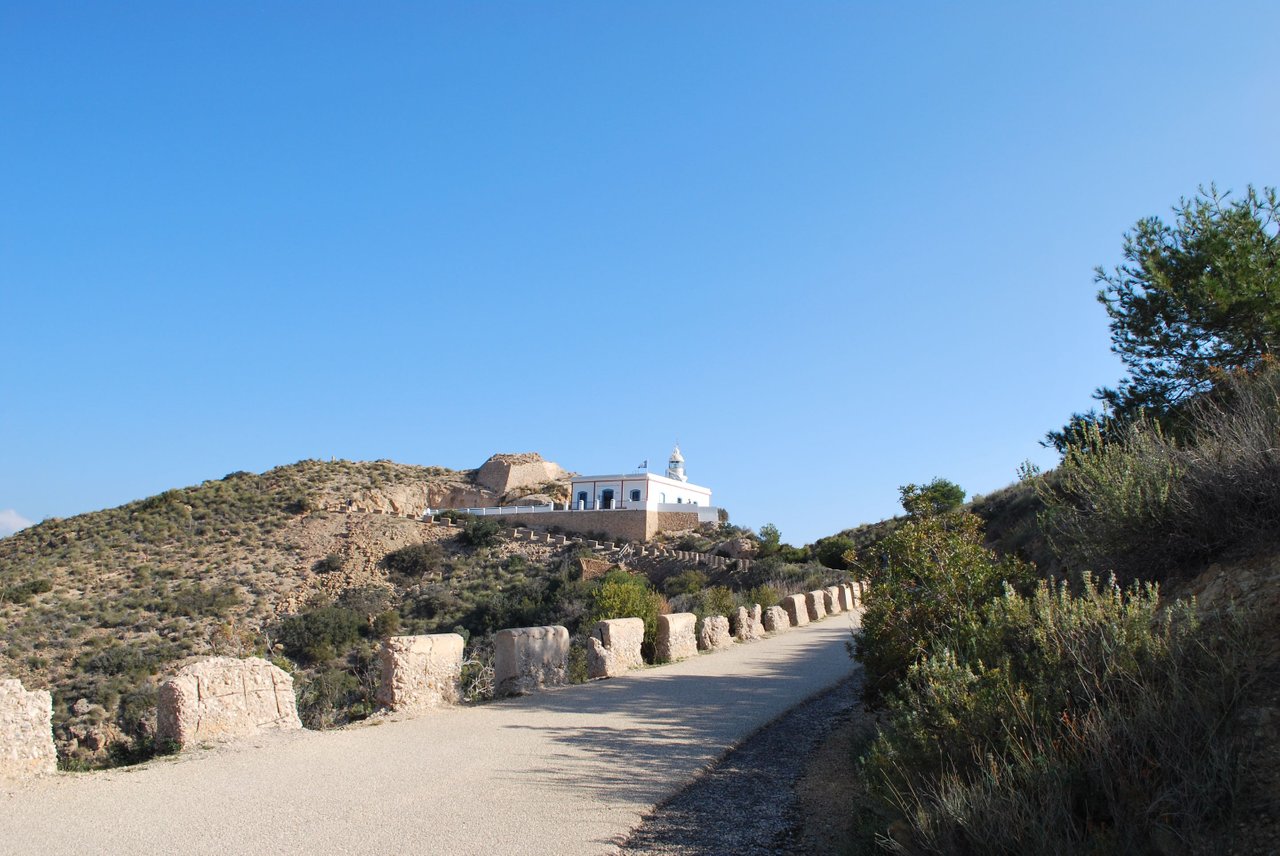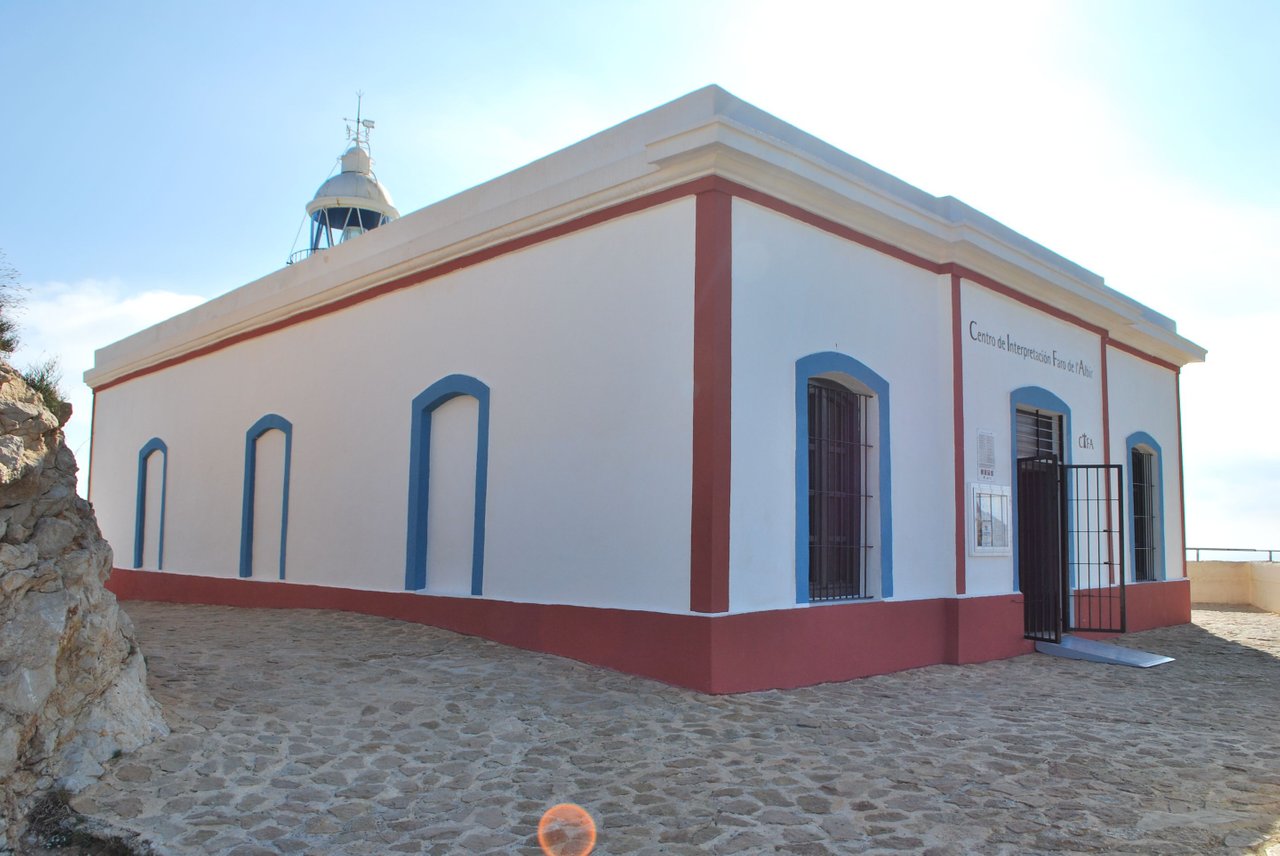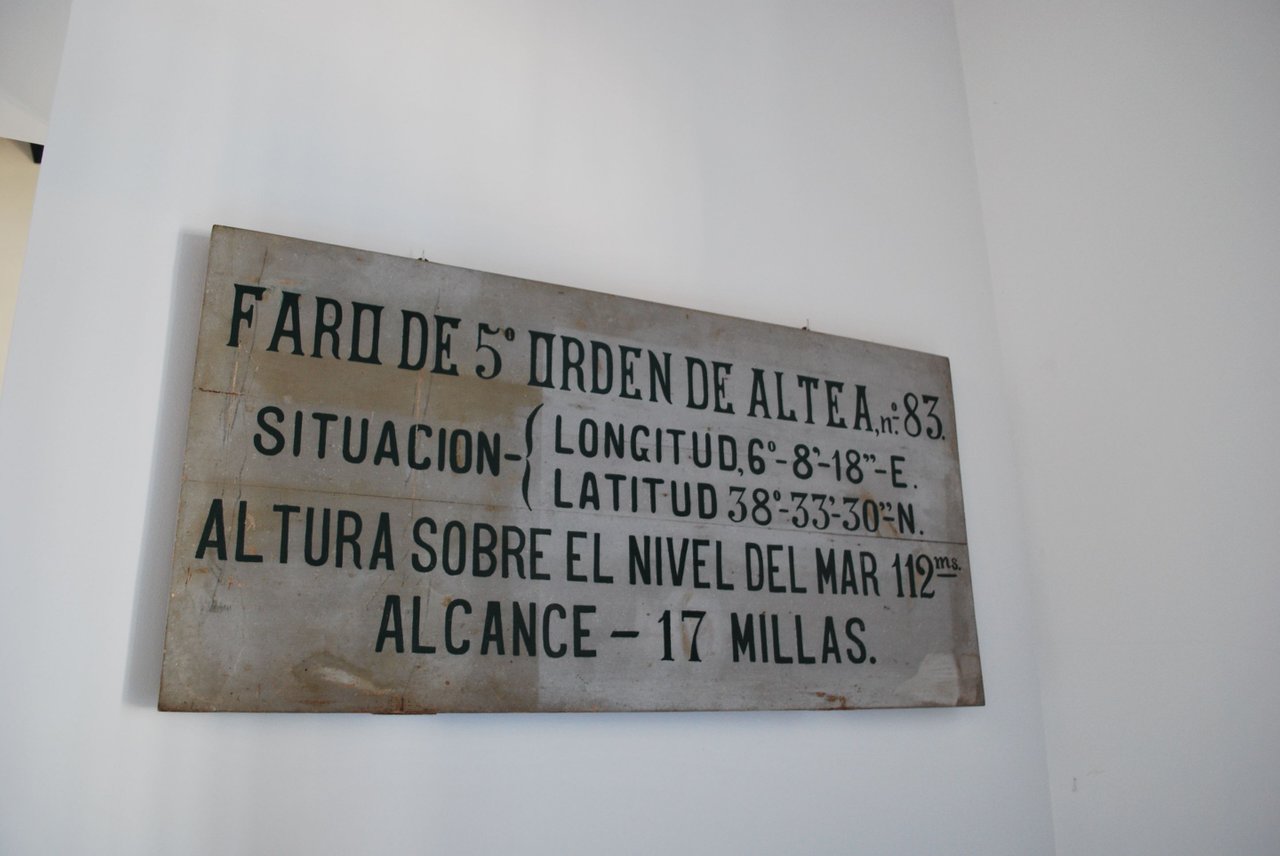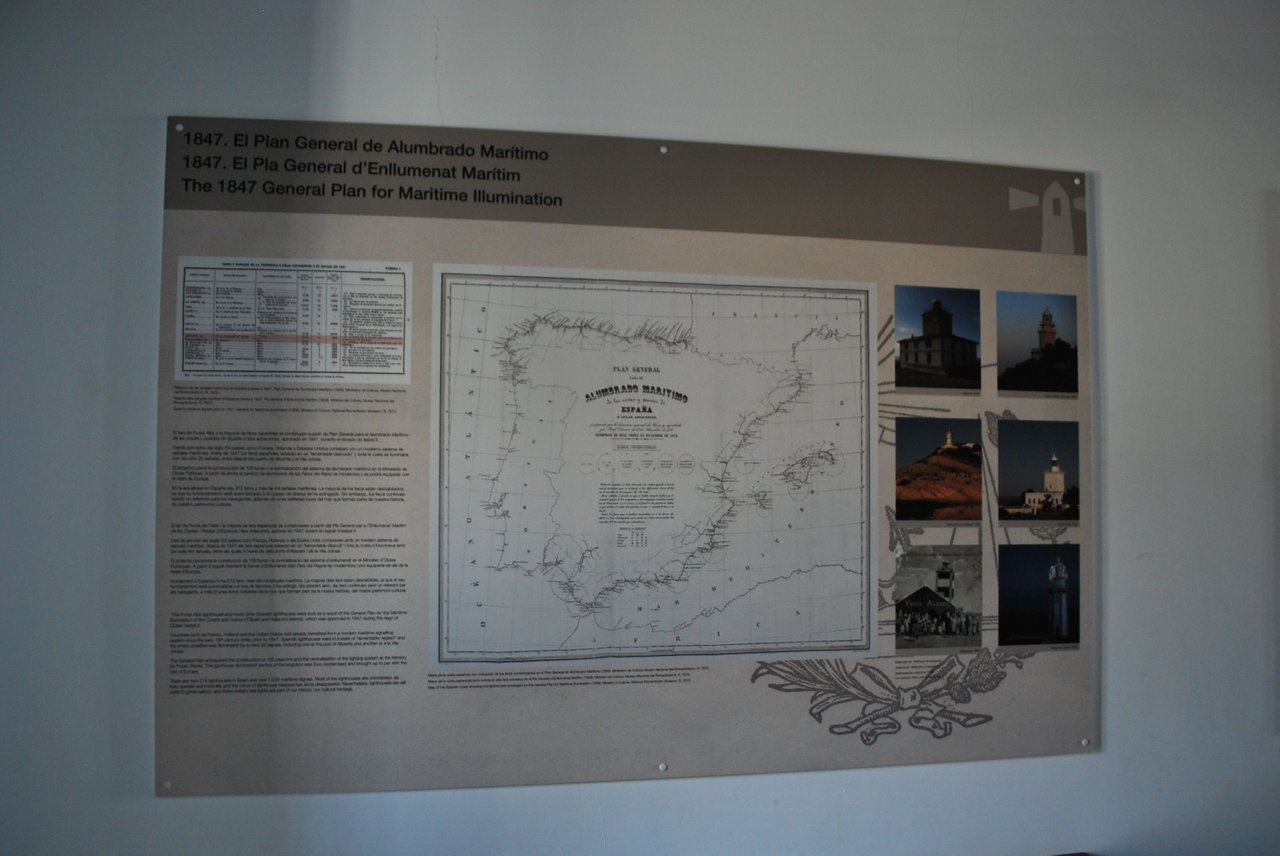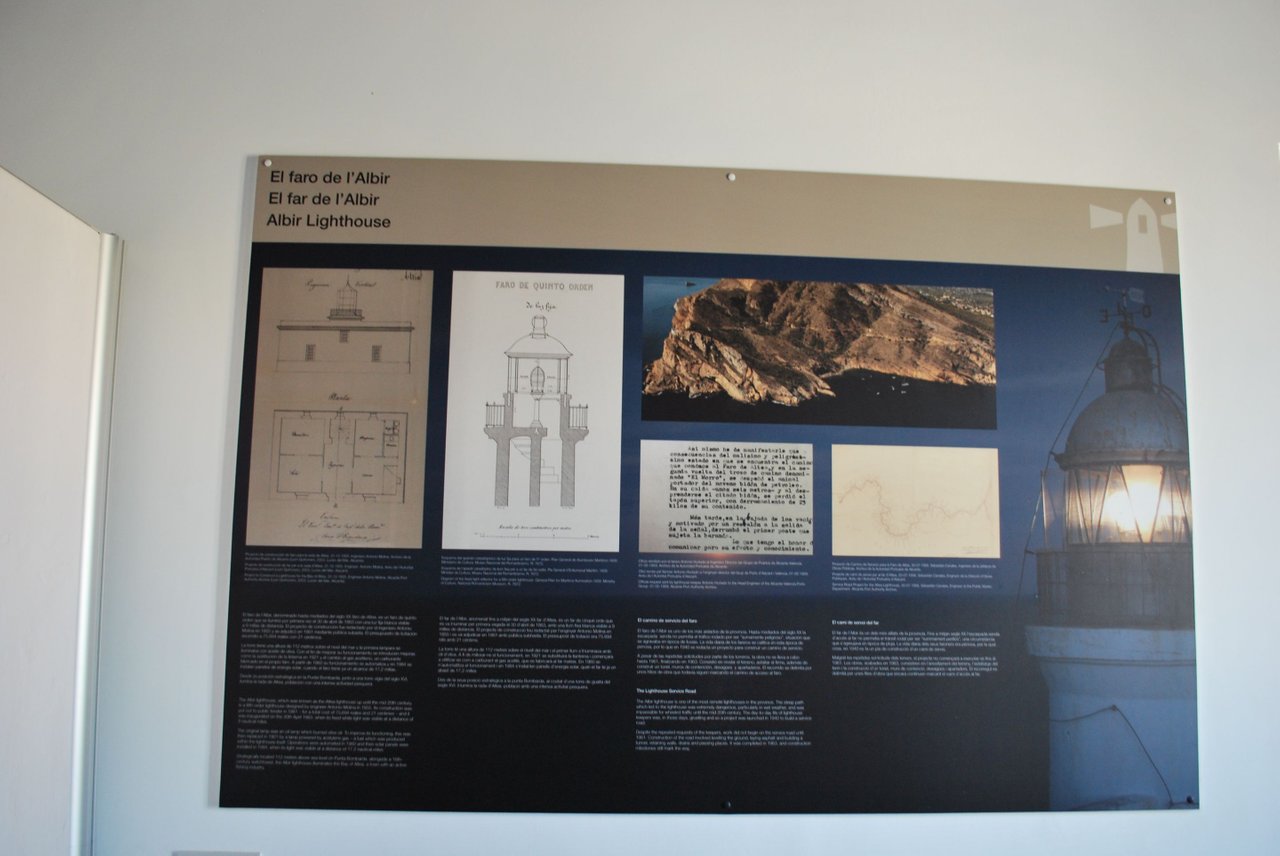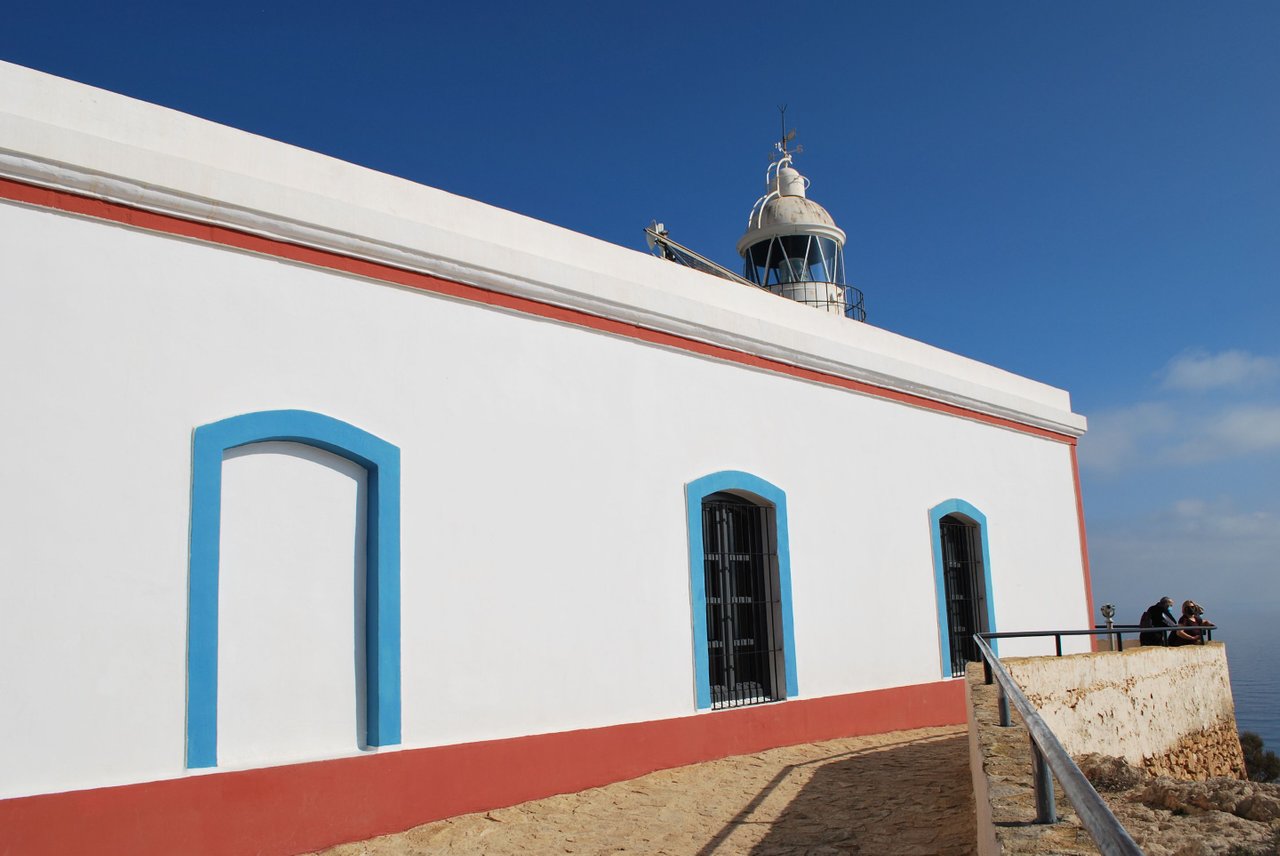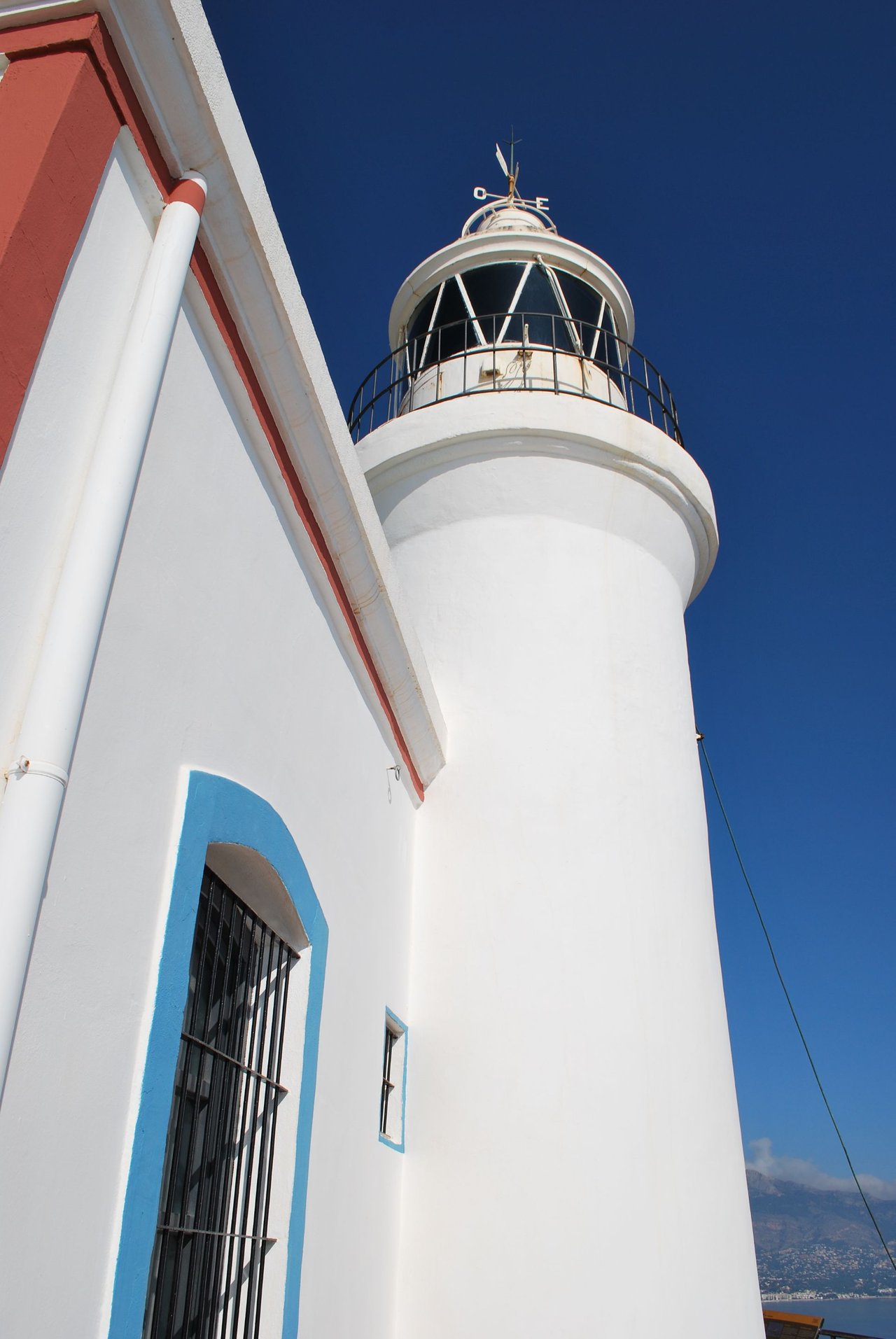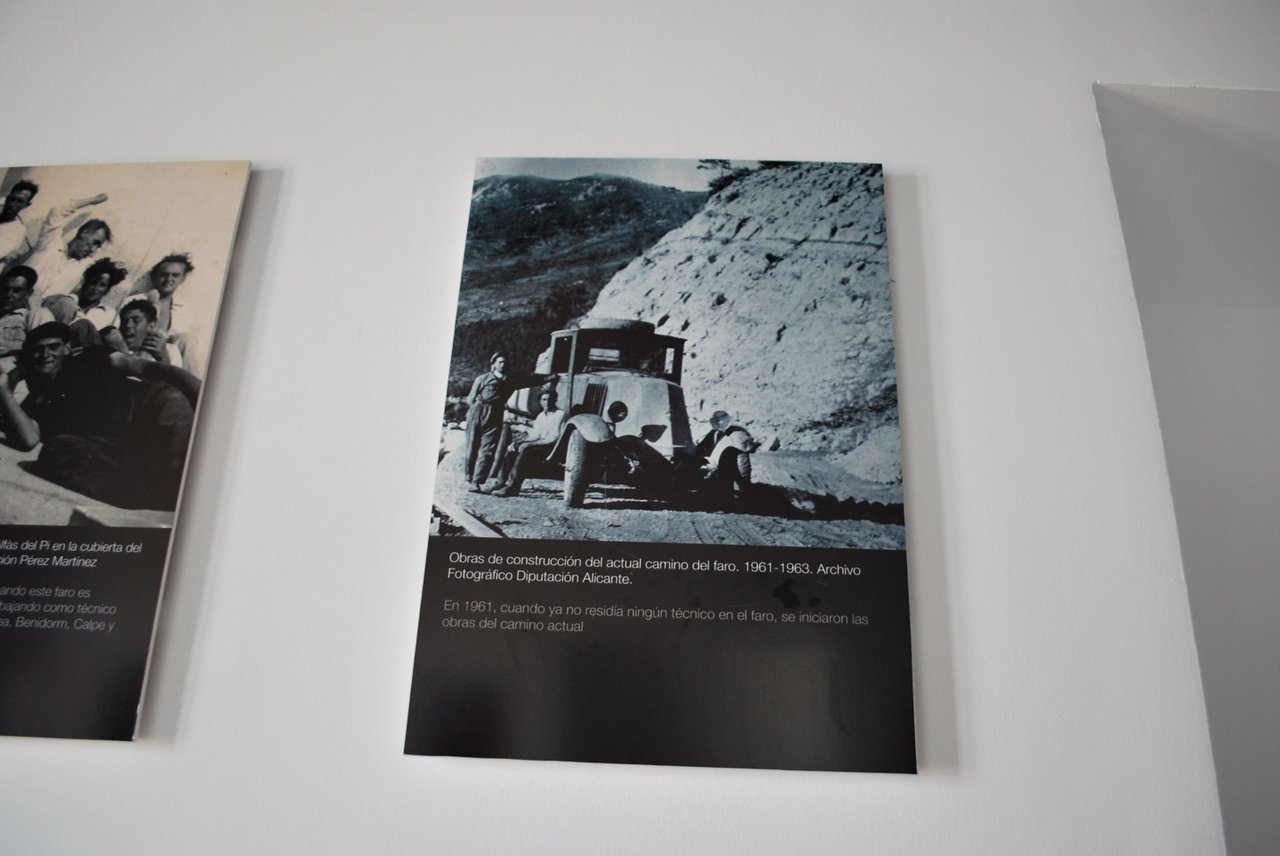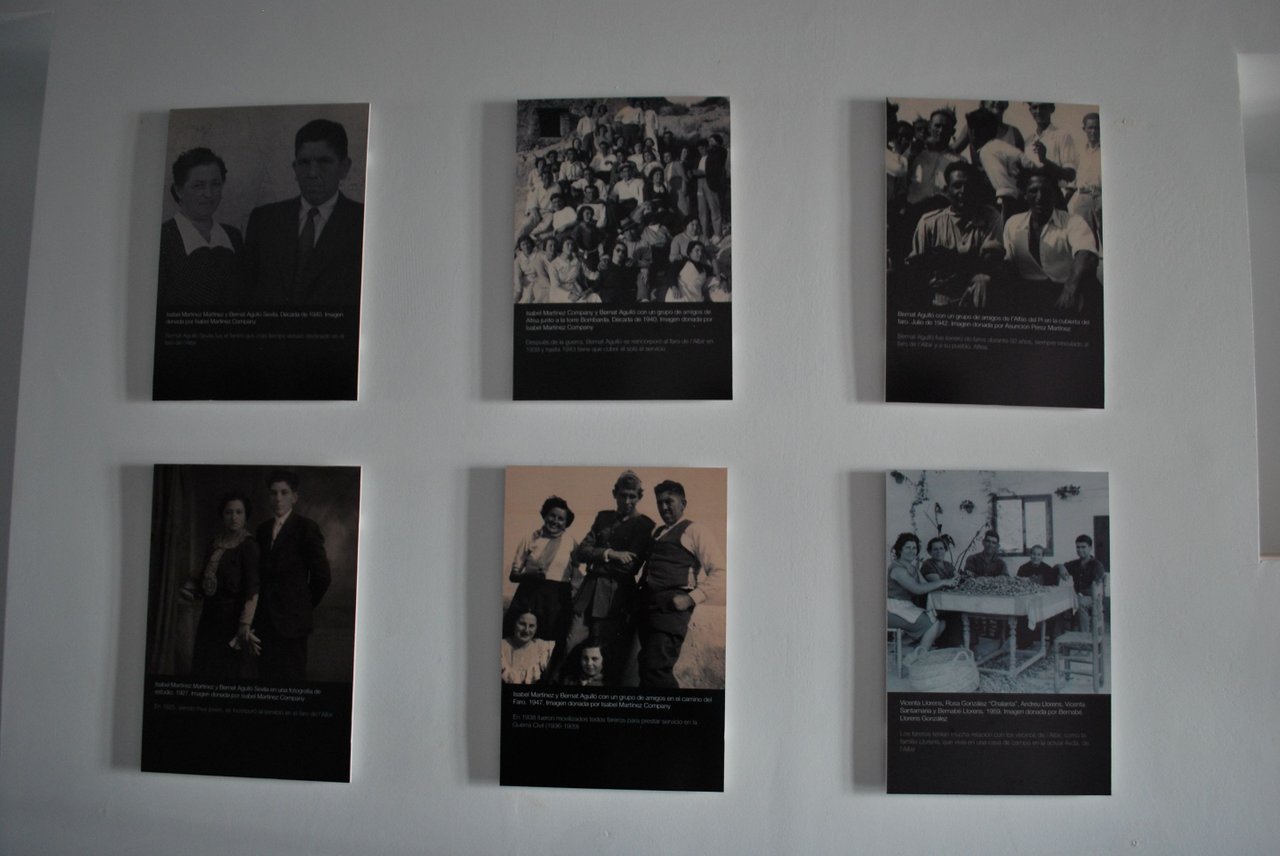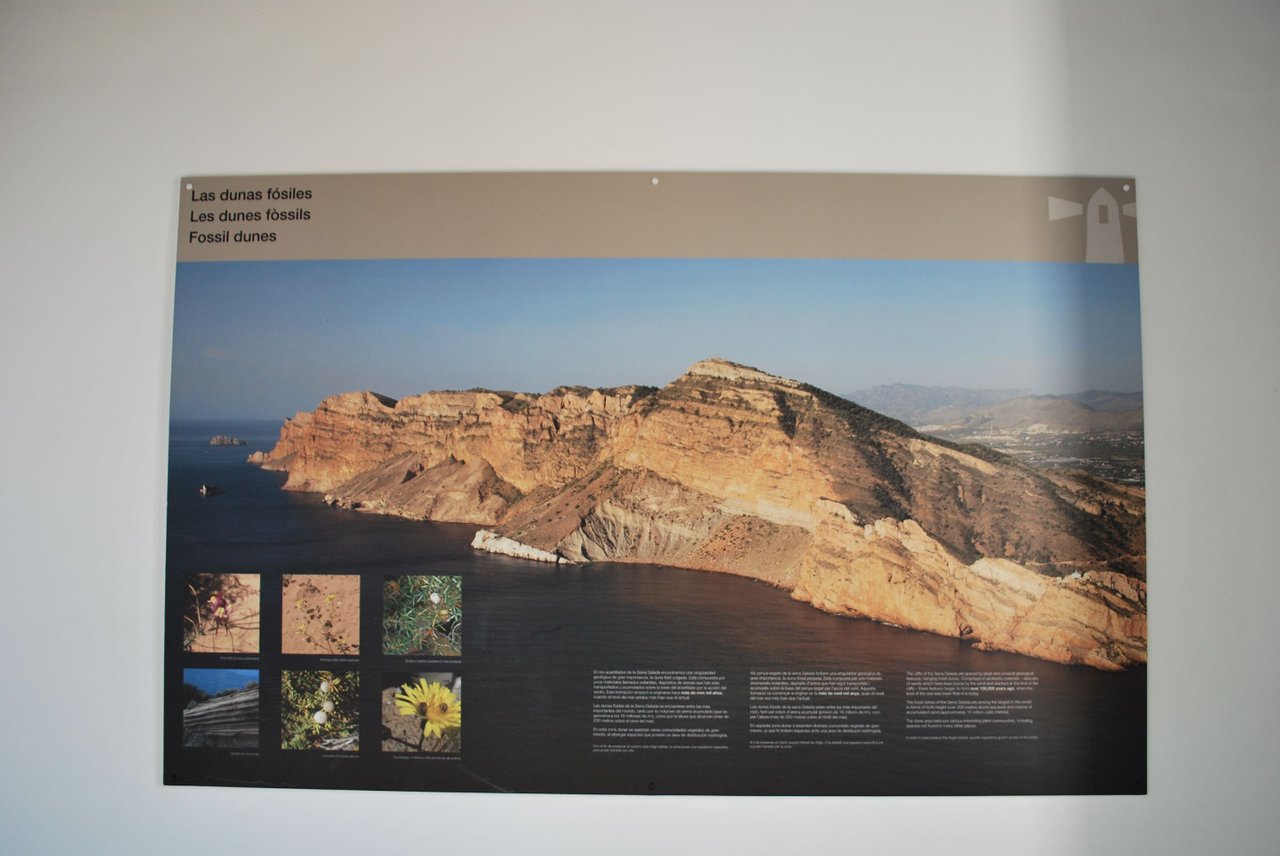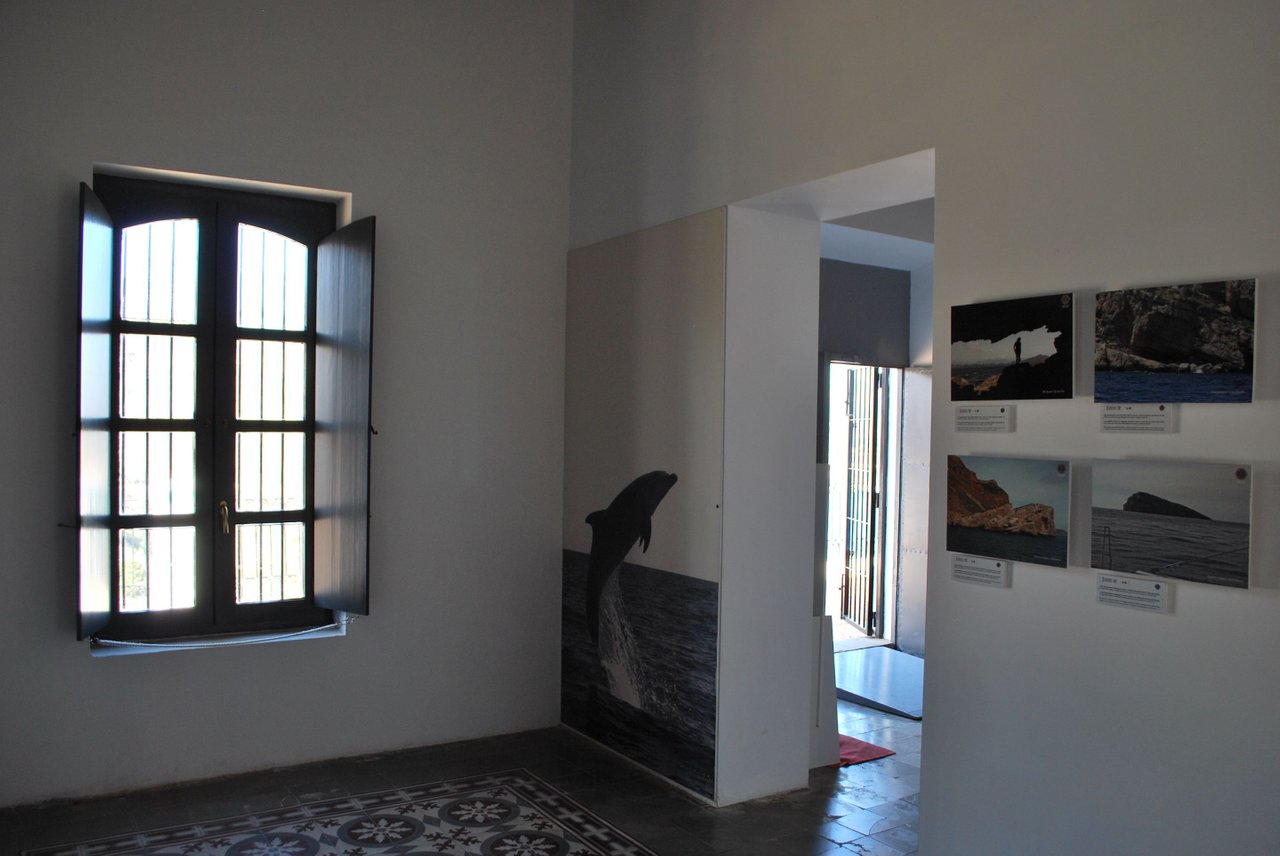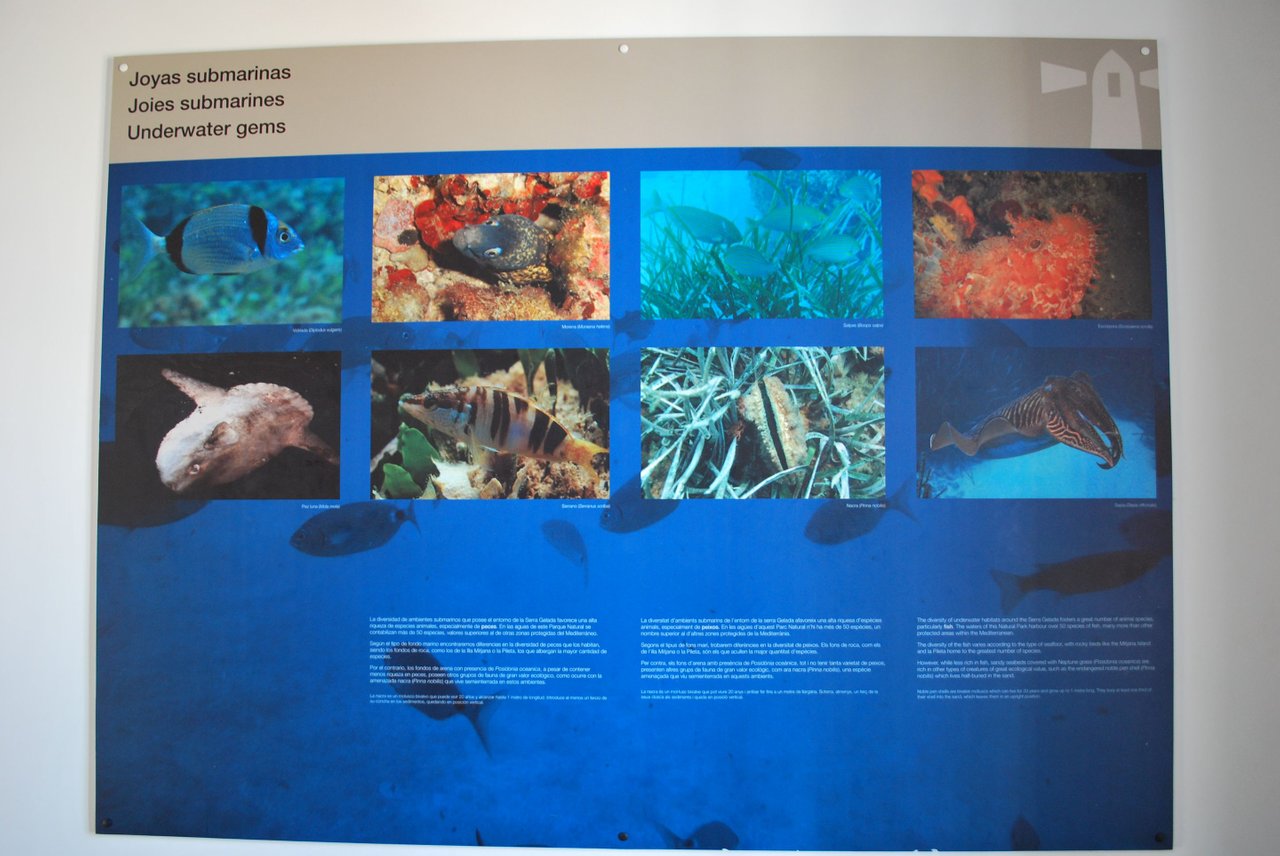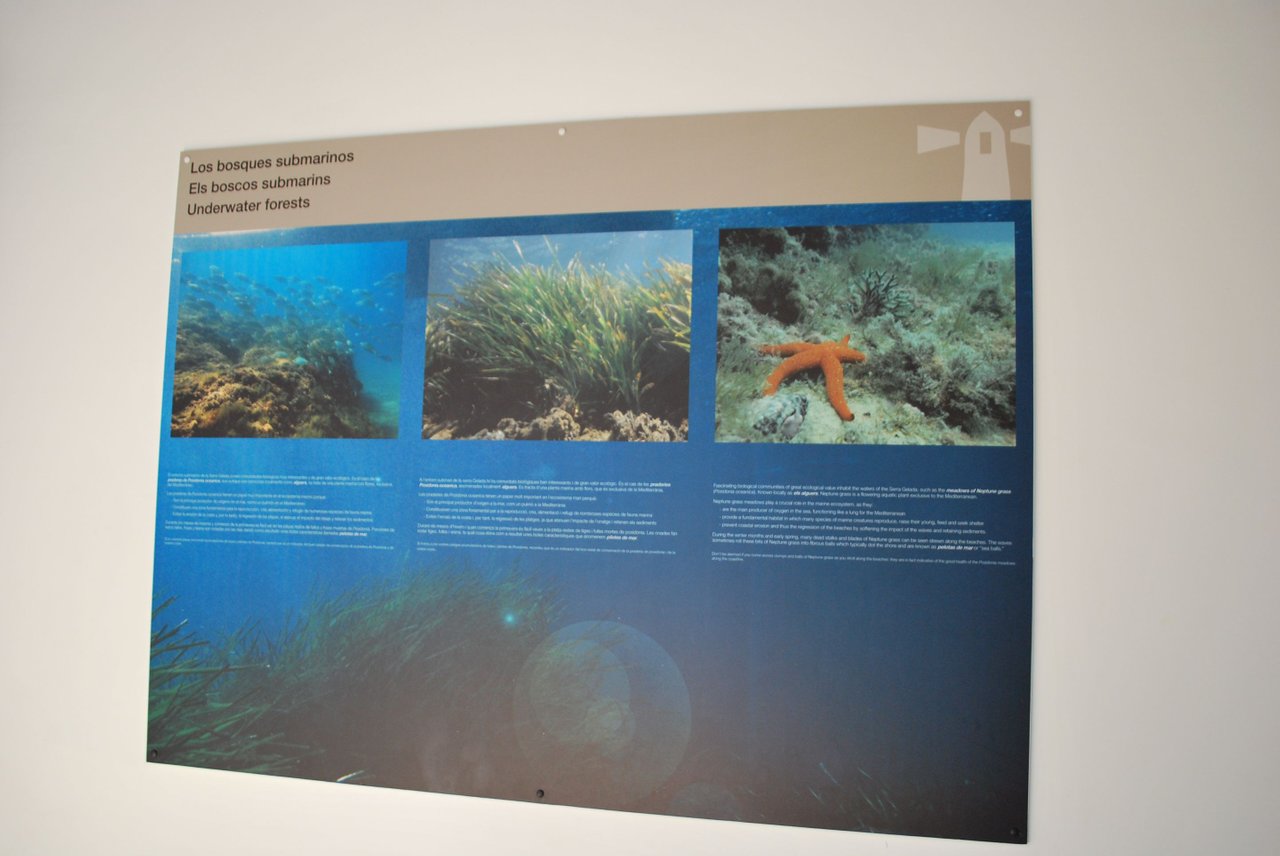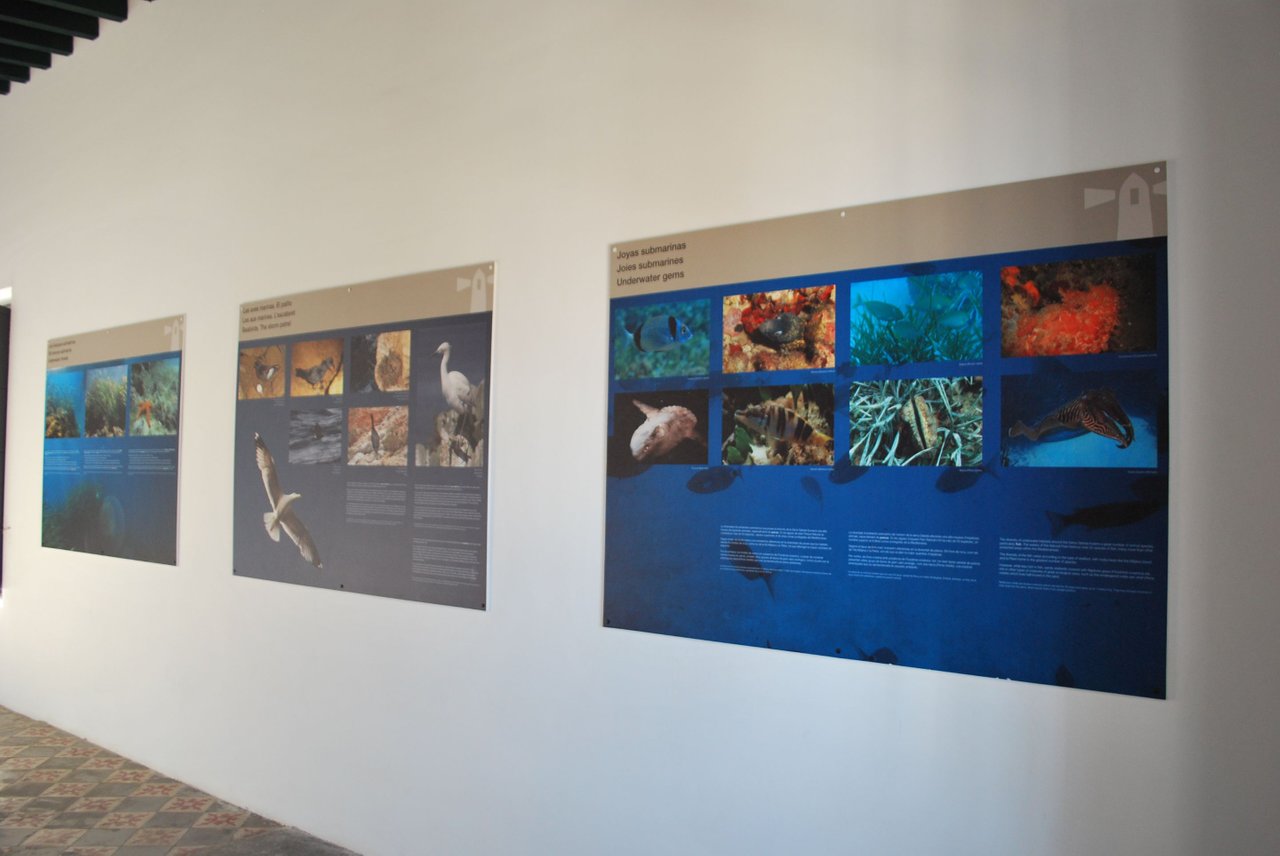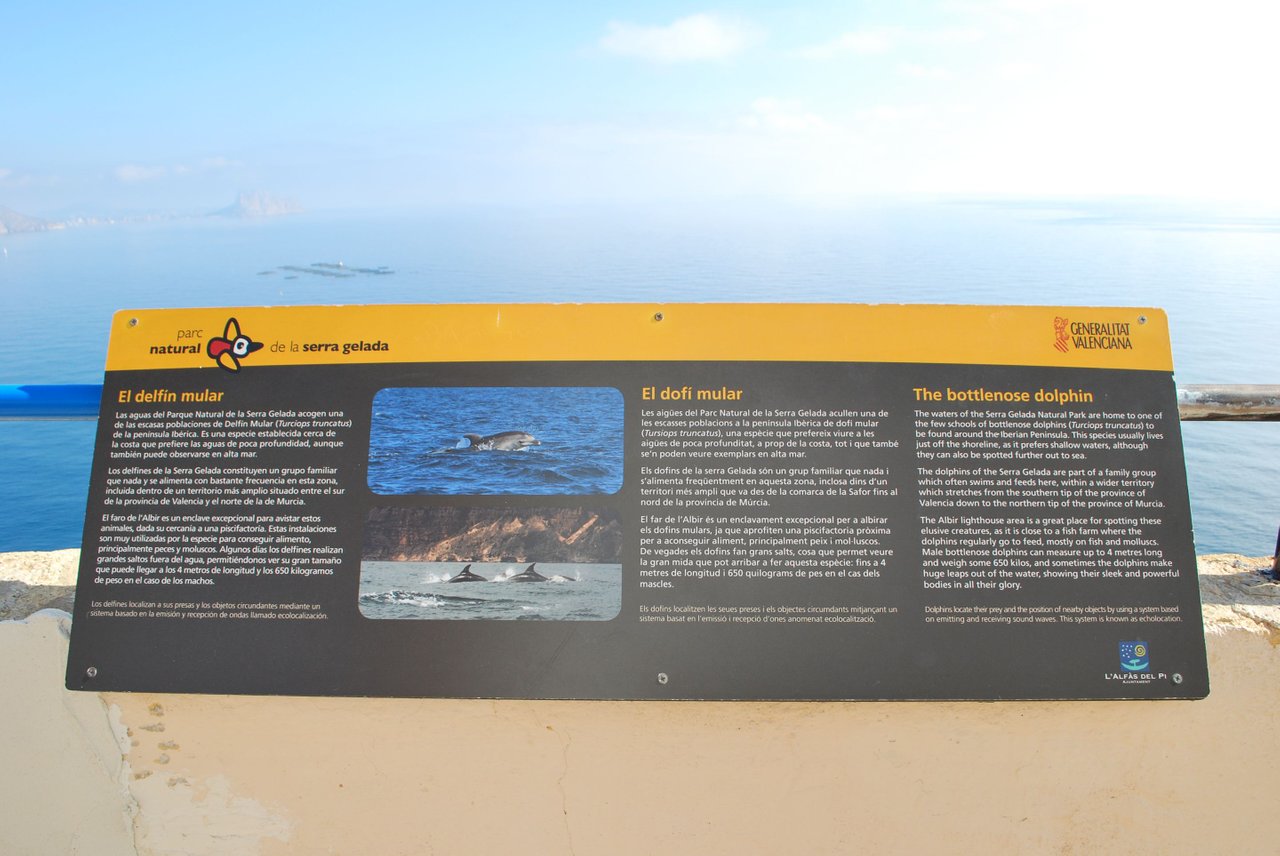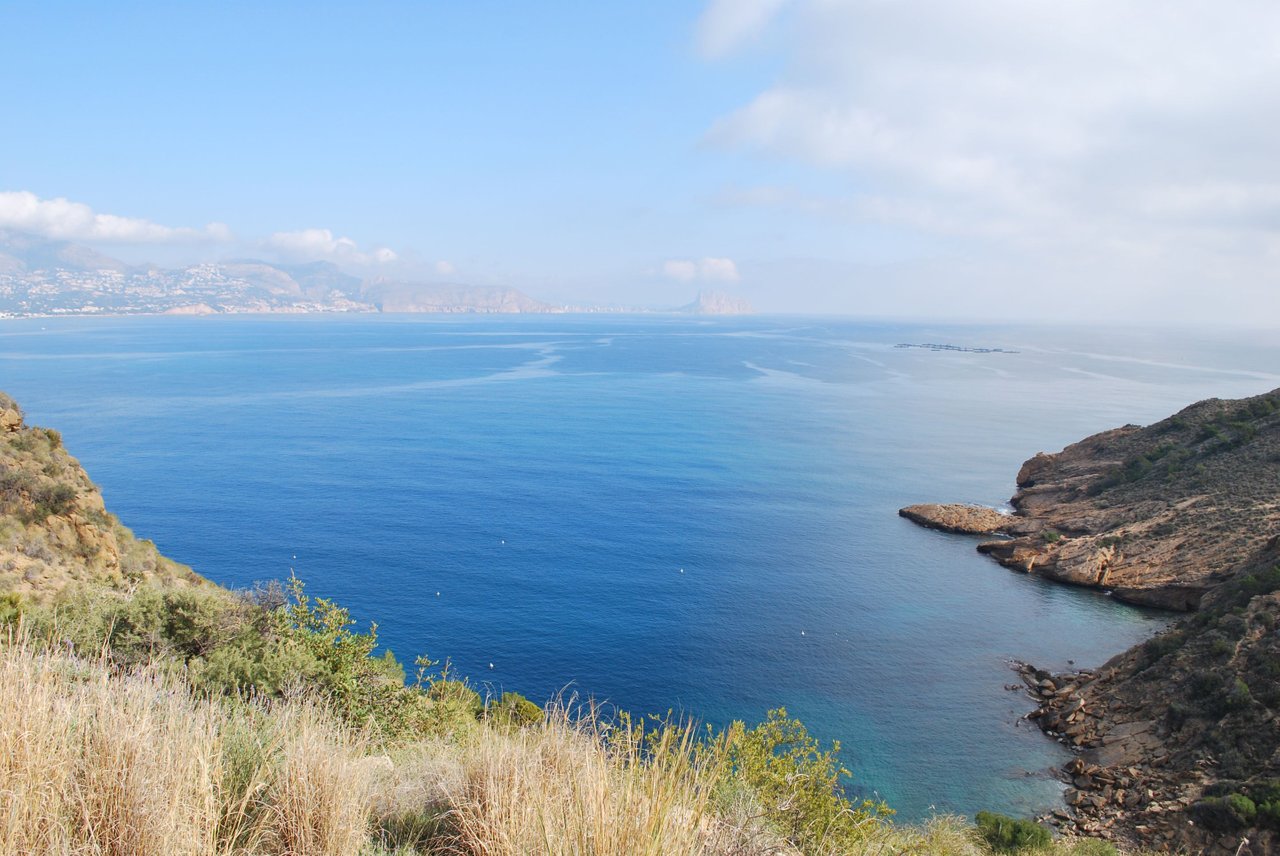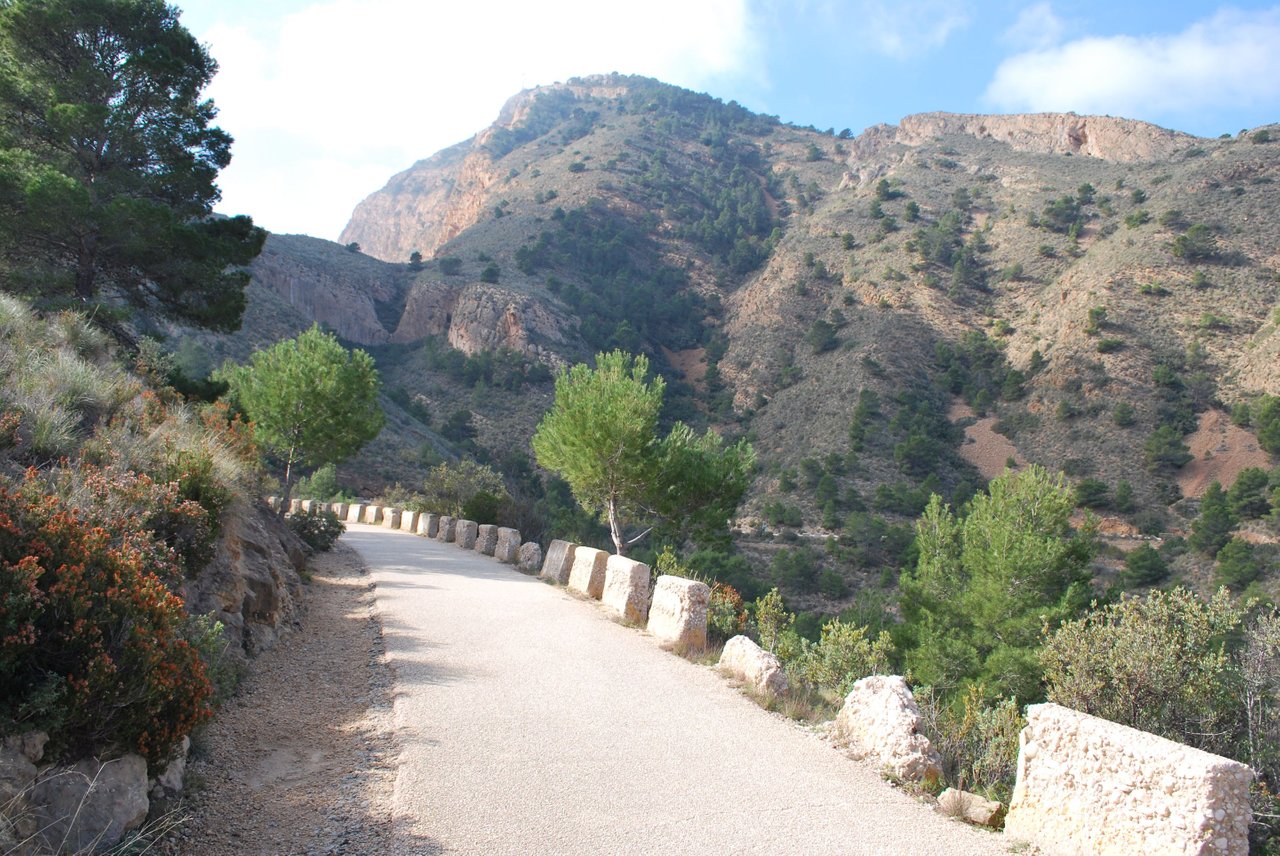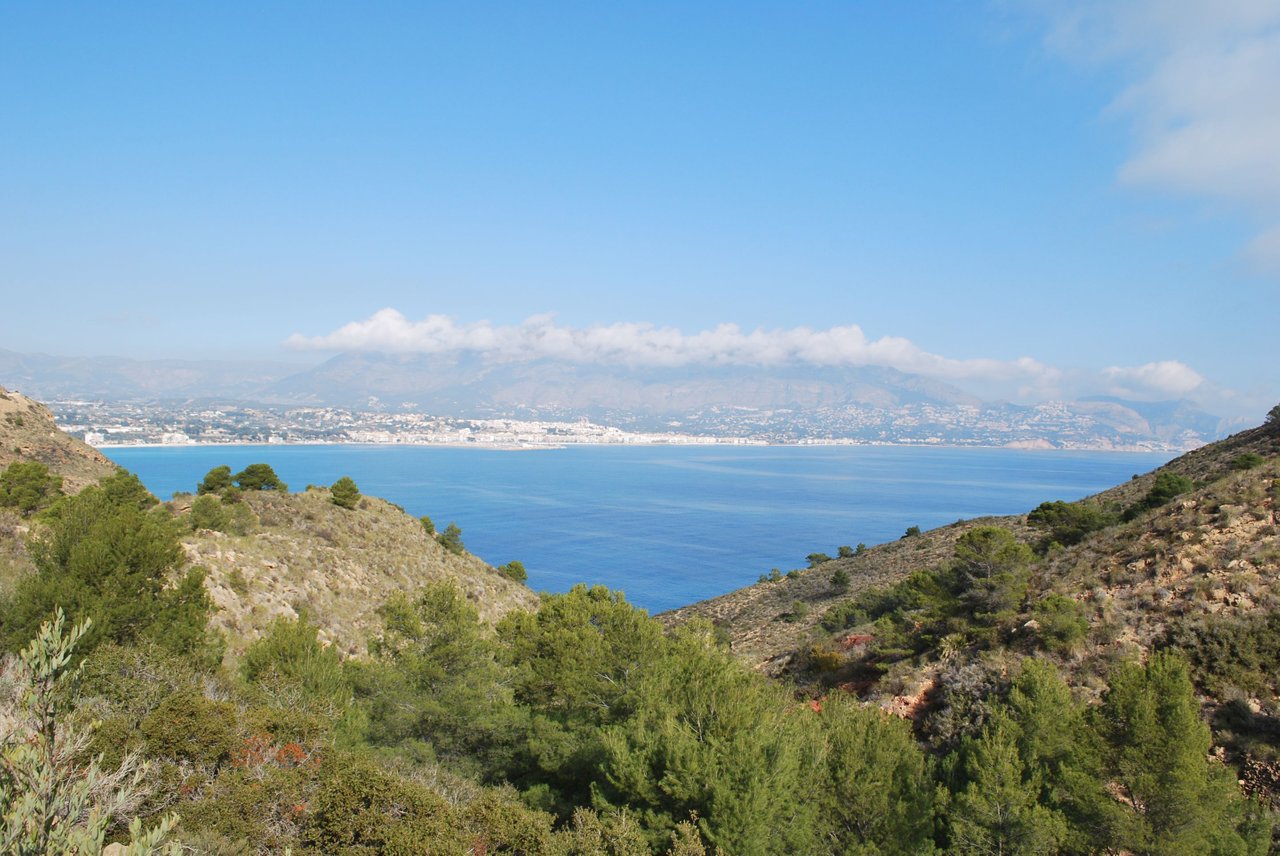Exactly one week ago, we took a walk to the infinity. Here, in the same place, same path. We made it until just halfway and stayed observing that boat in the bay "drawing" the symbol in the water. Now, we are going to the final stage of the path, which is the place where you see light. We are talking about the lighthouse!
Back in time, the lighthouse had real use. Now it is just a recreational place with a small photo exhibition inside. So, it was designed in the middle of the nineteenth century, when the Mediterranean coast of Spain received a wide red of lighthouses as protection. Antonio Molina was the engineer who designed it in 1855 and the works started in 1863. The fixed light was visible at a distance of nine nautical miles.
The original lamp was an oil burned one, but later it was replaced by a lamp powered by acetylene gas (in 1921). That fuel was produced in the lighthouse itself. Much later (1960) the operations were automated and finally, in 1984 solar panels were installed to provide the light. Then, its light was visible at a distance of 17 nautical miles.
Until the things in the lighthouse were automated, lighthouse keepers had to take care of everything. They lived there with their families and life was not so easy. It involved many tasks and duties like maintaining the lamp, the building, taking the meteorological readings, turning on and off the lamp. As there were two lighthouse keepers, the building itself was designed to offer a place to two families. One of the difficulties was providing the inhabitants of the lighthouse with fresh food, as there was no good path as now we have. It was more dangerous and long. The last technician who lived in the lighthouse was a certain Francisco Garcia Limaña. It was around the 1960' when the lighting in the building became automatized so there was no more need for a lighthouse keeper.
In the following collage, we can see some scenes from the life of the lighthouse keepers and their families. It was a bit dark inside so the photos dont do justice.
As the lighthouse is situated inside the Serra Gelada Natural Park, we could see some photos and info about its geological structure and animals and plants that are living there. The cliffs of Serra Gelada are actually hanging fossil dunes (started to form some 100,000 years ago). These fossil dunes are among the largest in the world. They are over 200 metres high and contains a huge volume of accumulated sand (around 16 million cubic metres). One year, we went by catamaran to see it, it was immense and the experience was great. Until some members of my family started to feel sickness by the sea.
Many species of fish and underwater animals live in the area of Serra Gelada. As well, underwater forests provide that habitat for them. And what is also just so awesome, is that we also have dolphins, families of them living around!! Sometimes they can be seen in the bay and those that have boats can enjoy their close presence. As I mentioned, seasickness among family members, so it is not the right activity for us, unfortunately.
The visit to the inside of the lighthouse was interesting. I loved both the history part of the lighthouse and the photos of the sea world. I know that those fish are there when I swim, as we already had some close encounters with octopuses (various ones and they were curious, they were not afraid of us), one rye fish, one barracuda and all those small fish living their life in the Mediterranean sea. Well, sometimes there are sharks, but luckily we never met any. At least not that we know about that.
I started my strolling back from this lighthouse visit. The day was nice, there were many visitors. Also, the path is pretty popular and not so difficult to walk. Anyway, if you ever visit this place (you can find out where it is by the coordinates from one of the photos) I recommend taking a walk here. It takes between one and two hours, depending on how quickly do you walk and how much time you spend enjoying the views of the blue sea.
